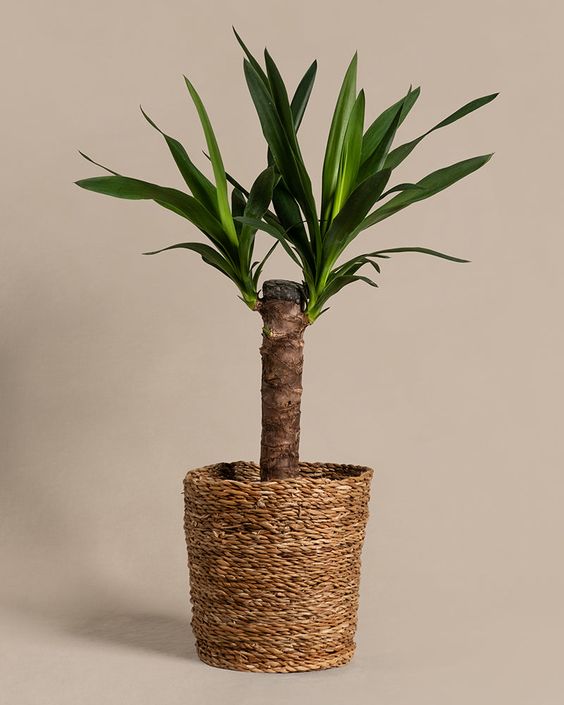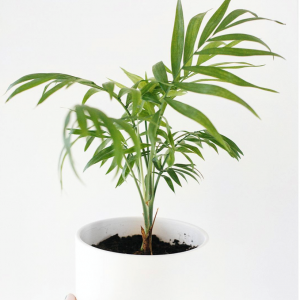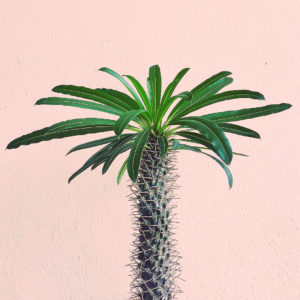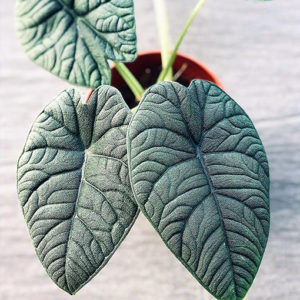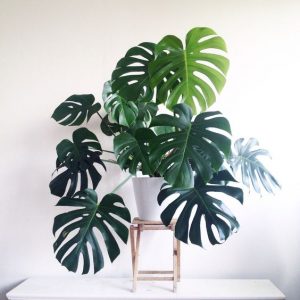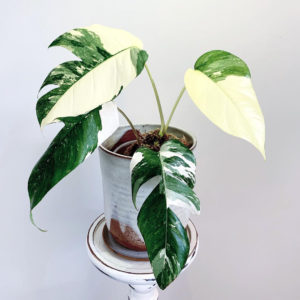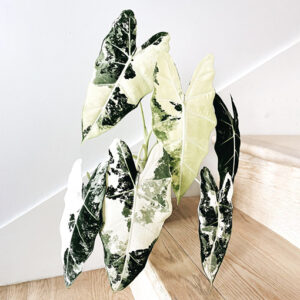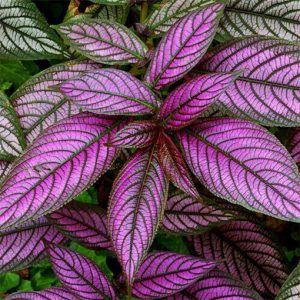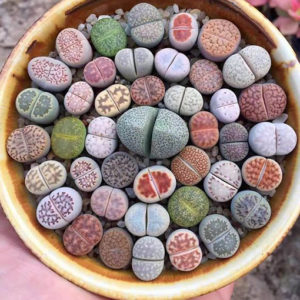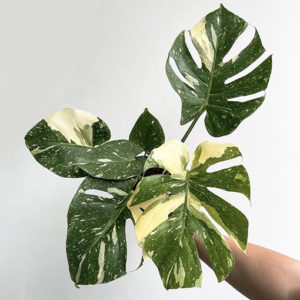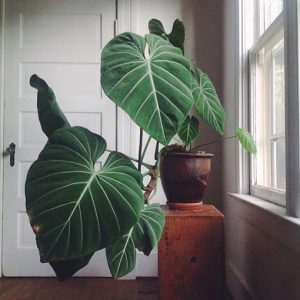
#Thejunglecollective!
The Yucca Palm, often referred to as the Spineless Yucca or Yucca Elephantipes, is a striking and versatile plant popular in both indoor and outdoor landscaping. Known for its architectural elegance and ease of care, the Yucca Palm can bring a touch of the desert to your home or garden. This guide will cover everything you need to know about growing and caring for your Yucca Palm, ensuring it thrives in its environment.
Characteristics of the Yucca Palm
The Yucca Palm is a perennial shrub native to Central America, specifically Mexico and Guatemala. It is characterized by its sturdy, tree-like trunk and sword-shaped, evergreen leaves. The leaves are glossy and can grow up to three feet long, creating a dramatic, spiky appearance. Mature Yucca Palms can reach heights of 20 to 30 feet outdoors, while indoor plants typically grow up to six feet tall.
One of the most attractive features of the Yucca Palm is its ability to produce stunning clusters of white, bell-shaped flowers during the summer months. However, flowering is more common in outdoor specimens.
Ideal Growing Conditions
Light
- Indoor: Yucca Palms prefer bright, indirect light but can tolerate lower light conditions. Placing the plant near a south-facing window is ideal.
- Outdoor: In outdoor settings, Yucca Palms thrive in full sun to partial shade. Ensure they receive at least six hours of direct sunlight each day.
Temperature and Humidity
- Yucca Palms are adaptable to a range of temperatures but prefer warmer climates. They thrive in temperatures between 60-80°F (15-27°C) and can tolerate temperatures as low as 30°F (-1°C) for short periods.
- They are well-suited to low humidity environments, making them perfect for indoor settings where humidity levels are typically lower.
Soil
- Yucca Palms prefer well-draining soil. A cactus or succulent mix is ideal, but they can also thrive in regular potting soil mixed with sand or perlite to enhance drainage.
- The pH level of the soil should be between 6.0 and 7.5, which is slightly acidic to neutral.
Watering
- Yucca Palms are drought-tolerant and require minimal watering. Allow the soil to dry out completely between waterings. Overwatering can lead to root rot.
- During the growing season (spring and summer), water the plant every 2-3 weeks. In the dormant season (fall and winter), reduce watering to once a month.
Planting and Repotting
Planting Yucca Palm
- Choose a pot with drainage holes to prevent water accumulation.
- Fill the pot with a well-draining soil mix and plant the Yucca Palm at the same depth it was in its previous container.
- Press the soil down firmly around the base to secure the plant and water lightly to settle the soil.
Repotting
- Repot Yucca Palms every 2-3 years or when they become root-bound. Spring is the best time for repotting.
- Select a pot that is one size larger than the current pot. Gently remove the plant from its current container, shaking off excess soil and inspecting the roots for any signs of rot or damage.
- Place the plant in the new pot, fill with fresh soil mix, and water thoroughly.
Maintenance and Care
Pruning
- Prune dead or yellowing leaves to maintain the plant’s appearance. Use clean, sharp scissors or pruning shears to cut leaves close to the trunk.
- Remove any offshoots or pups to encourage the main plant’s growth. These offshoots can be replanted to propagate new Yucca Palms.
Fertilizing
- Feed the Yucca Palm with a balanced, water-soluble fertilizer diluted to half strength during the growing season. Fertilize every 4-6 weeks.
- Avoid over-fertilizing, as this can lead to salt buildup in the soil.
Pest Control
- Yucca Palms are generally pest-resistant but can occasionally be affected by spider mites, mealybugs, and scale insects. Regularly inspect the plant for signs of pests.
- Treat infestations with insecticidal soap or neem oil. Wipe down the leaves with a damp cloth to remove pests and prevent infestations.
Propagation
Propagating Yucca Palms can be done through stem cuttings or by planting offshoots.
Stem Cuttings
- Cut a healthy stem from the plant, ensuring it is at least 4 inches long.
- Allow the cutting to dry for a few days to form a callus over the cut end.
- Plant the cutting in a well-draining soil mix and water lightly. Keep the soil slightly moist until roots develop, which usually takes a few weeks.
Offshoots (Pups)
- Remove the offshoots from the base of the parent plant using a sharp, clean knife.
- Allow the offshoots to dry for a few days before planting them in a well-draining soil mix.
- Water the offshoots lightly and maintain a warm, bright environment for optimal growth.
Common Problems and Solutions
Yellowing Leaves
- Cause: Overwatering or poor drainage.
- Solution: Allow the soil to dry out completely between waterings and ensure the pot has proper drainage.
Brown Leaf Tips
- Cause: Underwatering or low humidity.
- Solution: Increase watering frequency slightly and consider misting the plant occasionally to raise humidity.
Root Rot
- Cause: Overwatering or waterlogged soil.
- Solution: Reduce watering and repot the plant in fresh, well-draining soil. Trim away any rotted roots.
Pest Infestation
- Cause: Spider mites, mealybugs, or scale insects.
- Solution: Treat with insecticidal soap or neem oil and wipe down leaves regularly.
Benefits of Yucca Palm
Aesthetic Appeal
The Yucca Palm’s bold, architectural form makes it a standout feature in any landscape or interior setting.
Low Maintenance
Its drought tolerance and minimal watering needs make the Yucca Palm an ideal choice for busy individuals or those new to plant care.
Air Purification
Yucca Palms help improve indoor air quality by removing toxins and providing fresh oxygen.
Versatility
Suitable for both indoor and outdoor environments, the Yucca Palm can adapt to various settings and enhance the visual appeal of any space.
The Yucca Palm is a remarkable plant that combines beauty with resilience, making it a favorite among gardeners and interior designers alike. By providing the right growing conditions and minimal maintenance, you can enjoy the striking presence of a Yucca Palm in your home or garden for years to come. Whether you’re looking to add a touch of the desert to your landscape or seeking a hardy indoor plant, the Yucca Palm is a versatile and rewarding choice.
If you want more information about caring for indoor and outdoor plants, check out our shop for a wide selection of both plants and planters.

